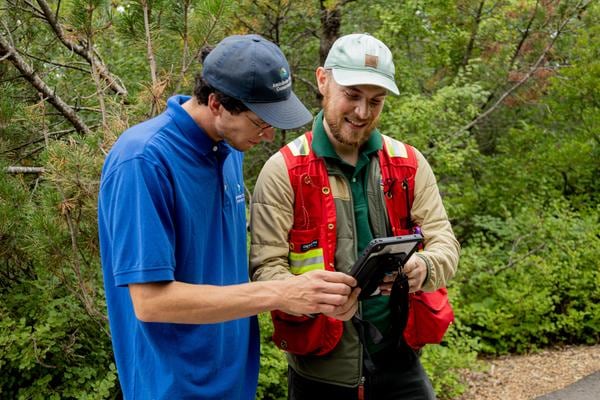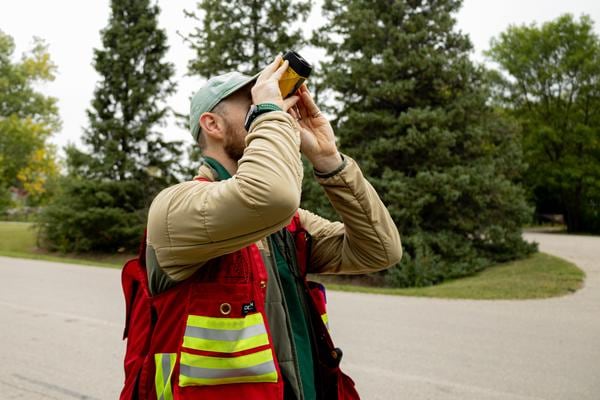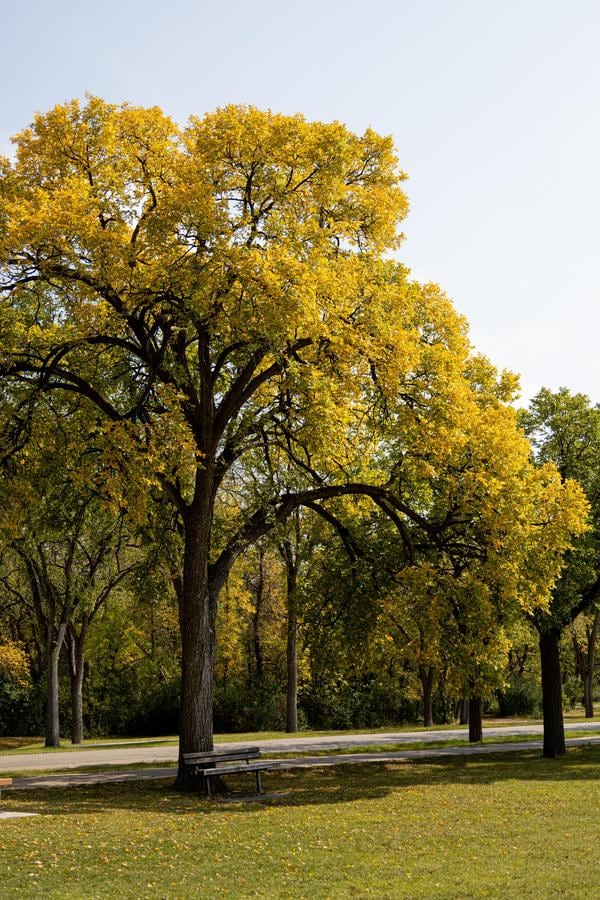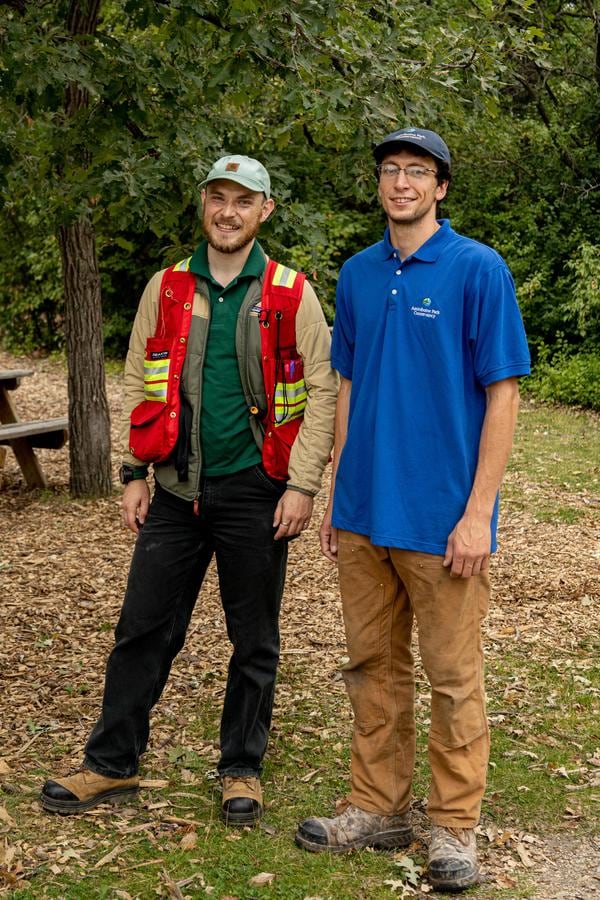Here in Assiniboine Park, our trees are treasured assets, recognizing their intrinsic value to both the Park and the experiences of our visitors. The Park is home to many magnificent, mature trees, providing a sanctuary in the city. Their journey from little saplings to their current grandeur spans years of growth, and we are committed to ensuring they continue to thrive.
Recently, we collaborated with Diamond Head Consulting to develop our first forest management plan. This plan involved two key tasks: creating a map and inventory of planted trees and studying natural forested areas in the park, examining species composition and diversity.
Tree Inventory Process
Our team, alongside Diamond Head Consulting staff, used mobile devices to record tree details, including species, size, height, and health. The goal is a comprehensive tree map and database, guiding management actions to ensure each tree can grow to its maximum potential and provide the highest value to the Park and its visitors.
Previous work has already been done to create a canopy cover map, which uses LiDAR (Light Detection and Ranging) information and translates it into a map of where trees are located and the extent of their crown. This data is best collected when trees have leaves, which are vital for species identification and health assessment.

.jpg)
Using iPads, our surveyors locate each tree and drop a pin on the map to mark its position. They then answer a series of questions and input data that provides a profile of each tree. This process involves several steps:
- Species Identification: Our surveyors reference the City of Winnipeg's tree inventory to accurately identify the tree species.
- Diameter Measurement: A diameter tape, a tool that uses pi to calculate the diameter, is wrapped around the tree to measure its diameter at chest height (1.4 meters above the ground).
- Height Measurement: A hypsometer, like a laser range finder, automatically calculates the tree's height. By aiming it at the tree's apex from a distance, our surveyors add this value to their eye height to determine the tree's full height.
- Health Assessment: Surveyors perform a comprehensive visual inspection of the tree, evaluating its overall condition. The tree is then categorized into one of several health ratings: "dying or dead," "poor condition," "fair," "good," or the exceptional "excellent." “Excellent” trees are a very rare and special rating. These trees are in perfect condition, may be a unique species, and have, or will achieve significant size. This category represents a tree that is unparalleled in value to the Park.
Following the assessment, our surveyors provide management recommendations tailored to each tree. These suggestions are designed to support and extend the tree's life within the Park. Part of our management strategy also involves identifying trees that could pose a risk to Park visitors or amenities. Trees overhanging pathways or benches, for instance, may be flagged for risk assessment by a qualified arborist or require pruning to ensure safety.


As we continue to nurture the Park’s trees, there are a few things you can do to help us!
When in the Park please take care to not damage the trees. Hanging hammocks and slack lines on trees can harm their internal systems if not properly cushioned. We have many young, newly planted trees in the Park so please be careful with your soccer balls and frisbees! Young trees have especially soft and sensitive bark, so avoid leaning anything against them or climbing on them, as tempting as it may be.
While near the river, please remain on designated paths. This not only ensures your safety, by avoiding poison ivy but also protects the soil, facilitating the regeneration of the understory, which is essential for the Park's ecosystem.



You can also make a lasting impact by supporting the Assiniboine Park Conservancy Trees for Tomorrow fund. Your generous donation will play a pivotal role in nurturing and preserving our majestic tree canopy for generations to come.
Together, we can ensure that the beauty of Assiniboine Park continues to flourish, providing inspiration, and cherished memories for all who visit.





